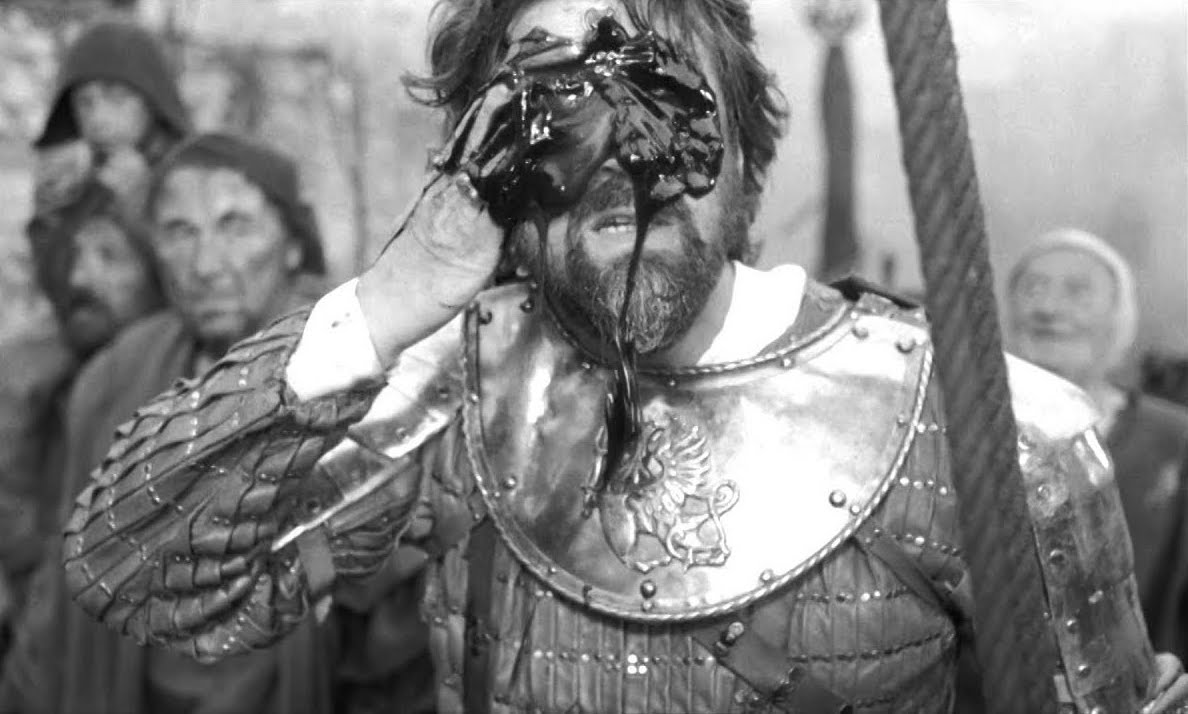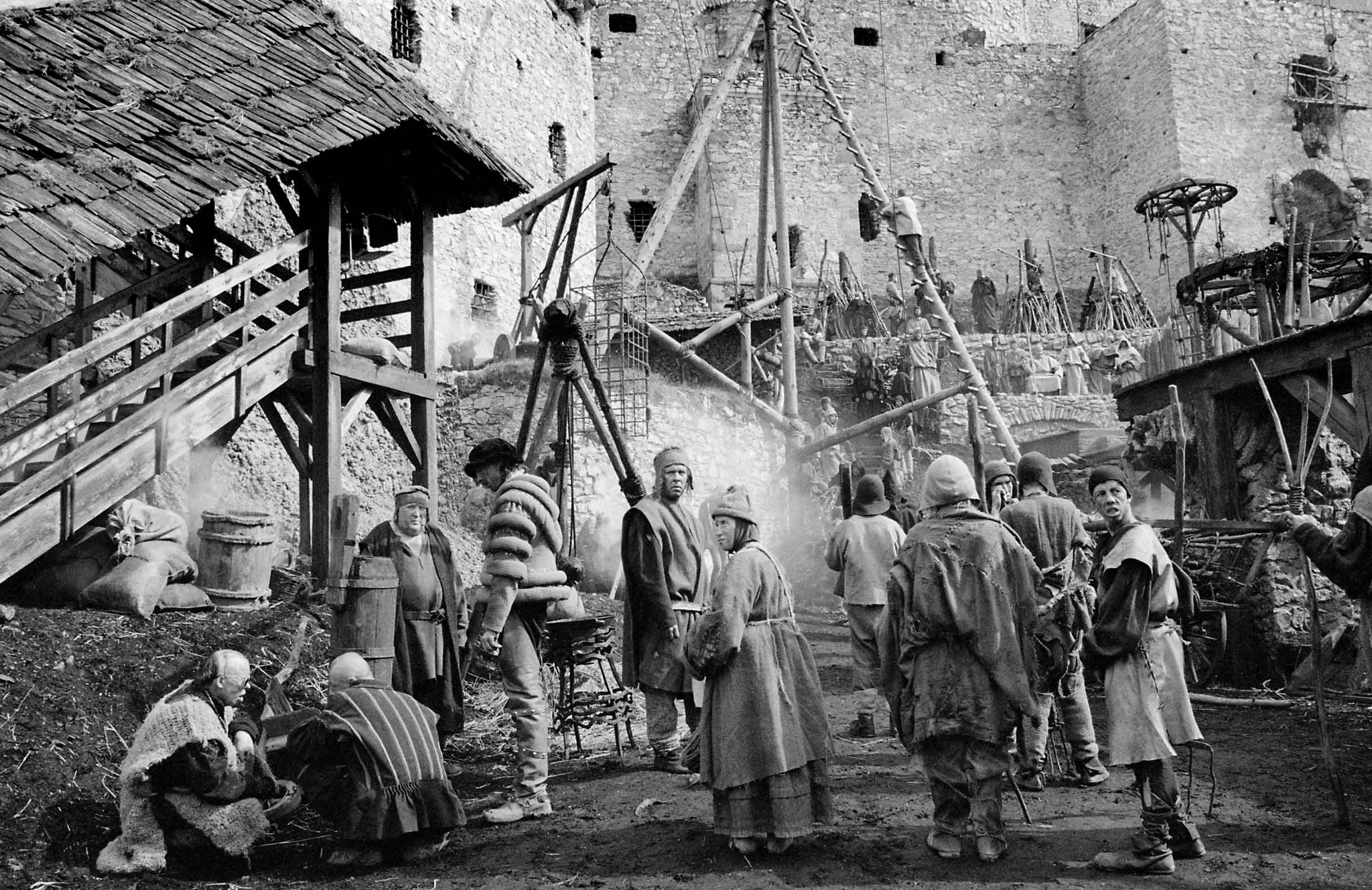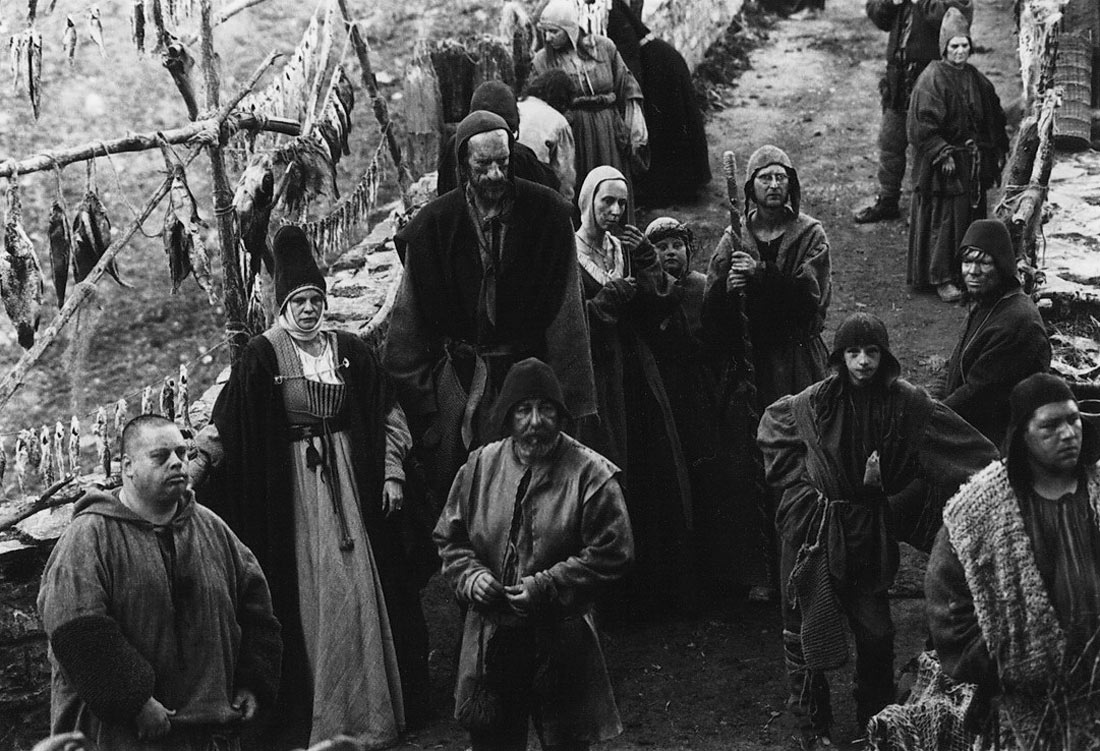
Hard to Be a God
Aleksei German
Photo credits: lantarenvenster
6th October 2020
“Hard to be a God” is a radical science fiction film, directed by Aleksei German based on the novel of the same name written by the Strugatsky brothers. Aleksei German passed away due to heart failure before it’s completion, so the final touches were added by his son and the film was finally released in 2013, after 13 years of production. The film is difficult to describe; it’s definitely challenging and bizarre to say the least. Critics and viewers are divided; some consider it to be a cinematic masterpiece with undeniable artistic merit, whilst others are unable to finish the film due to disgust, loathing or frustration. It is absurd, grotesque and terrifying, but also puzzlingly insightful, captivating and arguably a tour de force of art cinema.
The film’s story involves a group of scientists that travel to a nearby planet that appears to be identical to earth but has not advanced beyond the Middle Ages. They are tasked to observe it but are forbidden to interfere with its natural course of history. But instead of the planet embracing the advancement of a Renaissance through support of cultural and technological innovation, it is violently supressed by its ruling dictators. Intellectuals, artists and scientists are murdered, burnt on the stake and persecuted – the civillians and slaves live in filth and subjugation, a religious cult is gaining influence, autocratic corruption is widespread and fascist policing is inescapable. Consequently, the planet is perpetually trapped in its own barbaric medieval nightmare.
The focal point of the film is the scientist Anton who somehow assumes the identity of Don Rumata, a nobleman that resides in a stone castle surrounded by poverty and destitution. For some reason, the superstitious locals believe he is the son of the previous King, a descendent of a local deity, and is consequently treated as divine, whilst the rulers and religious cults are suspicious. Equipped with the knowledge from Earth, he decides to act against the cruelty and violence around him. Despite being forbidden from interfering with the planet’s political and technological circumstances, Rumata tries to save the local intellectuals from their miserable fate. With this burden on his shoulders, Rumata can only acknowledge that it is “hard to be a god”.

Photo credits: The Guardian
The plot sounds extremely thought-provoking, you can imagine there being much room for exciting character development and exploration of philosophical and psychological problems in the feudal sci-fi setting. This is precisely why I decided to watch it in the first place based on reading the plot summary. However, I was frustratingly disappointment because the film makes absolutely no sense unless you’re familiar with the novel (which I wasn't). The plot is extremely difficult to follow, the dialogue is nonsensical, and things are constantly happening with no cause. For example, we are not shown how or when the scientists arrive in the planet – or how Anton ends up donning the persona of Don Rumata. Rumata is not likeable, you can’t really read his intentions and his (or any) character development is ignored or impossible to identify. Large chunks of the novel are ignored or left out. In addition to this, Aleksei German weaves the film together endlessly with unpleasant scenes; people spitting and sputtering, parading and marching through mud, and mostly nonsensical actions. They are subjected to mindless debauchery, unnerving abuse and grotesque stupidity. The result is quite disturbing and chaotic; perhaps what you would imagine hell in the Middle Ages to look like.
Despite all of this, on a strictly aesthetic level, the film is outstanding and contains some of the greatest works of set design. It recreates the backdrop of a foggy medieval castle town surrounded by gritty serf communities with intricately currated set pieces and costumes – for example, the stone-walled castle, feudal machineries and contraptions, unorthodox clothing, demon-horned armour and archaic instruments – every little detail is curated with care and attention. The film’s most common criticism is the immense magnitude of vulgarity; slaves being dragged by chains, dead corpses hung and left in the elements, peasants fighting and being flung into the muddy earth. Yes, it is grotesque, but it’s probably a more truthful depiction of feudal society in 12th Century Europe, unlike the universally clean, romanticised setting of medieval Europe in Hollywood films. There isn’t a single ‘good looking’ or ‘normal looking’ actor in this film (perhaps with the exception of Rumata) – it’s clear that effort was strangely put into making everyone undeniable ugly; crooked teeth, mud-spattered attire, weird mannerisms and disturbing smiles. The extras often stare directly into the lens with confusion – and then they turn away, spitting, shouting, growling or grovelling on the floor.

Photo credits: theartsdesk
Making the grotesque scenes attractive to the viewer’s eye is only possible because of the spectacular framing, composition and directing of the film. The film’s unusually aesthetic atmosphere is evident, something like a Kafkaesque nightmare – it is astonishingly surreal. Aleksei German makes use of a multitude of long-take sequence shots displaying bacchanal parades, torrential rain beating down infertile earth, curious onlookers prodding and ogling at the camera and close-ups of fish, poultry and unsightly faces. Everything is shot in high contrast black and white, giving a distinct rawness, texture and movement throughout the film. The result is a paradoxically elegant, mesmerising and beautiful film with each shot successively introducing us to another circle of German’s inferno.
That said, it is sad to see human beings reduced to a semi-bestial state participating in a pointless farce – you end up staring at this overwhelming exhibition so much that it almost becomes comical. The surreal carnival of madmen brawling, picking their noses and marching mechanically in the mud constantly repeats itself on screen. You can’t help but ask yourself, “what the heck is going on?”, and laugh. It’s clear that many scenes were purposefully crafted to cause bewilderment and agitation. It wouldn’t be wrong to suggest that the absurdity, ridiculousness and perpetual lunacy is part of the film’s appeal – it’s so persistent that it almost becomes hypnotic. You are inevitably transported into the world of Aleksei German’s uncomfortable pandemonium; you feel the gritty characters, the murky climate and the gloomy macabre.
It’s difficult to finish reading the above with a positive impression of the film, as the fact remains that it is possibly the most disgusting film ever made. However, if you can stomach the obscenity, ignore the frustrating lack of story-telling and simply try to appreciate its aesthetic quality – you may find yourself watching a masterfully crafted piece of cinema. I personally don’t mind the nonsensical crudeness, and actually find it extremely interesting. My only grievance is Aleksei German’s one-sided focus on the visuals and set design, which consequently neglects any kind of plotline – if only he developed the story properly and embeded strong philosophical and socio-political themes into the film, it would be perfect. Nevertheless, the aesthetic character of the film has helped propel it's reputation and status to that of a cult-classic. Perhaps this should be enough to convince film lovers to try it.

Photo credits: Pinterest